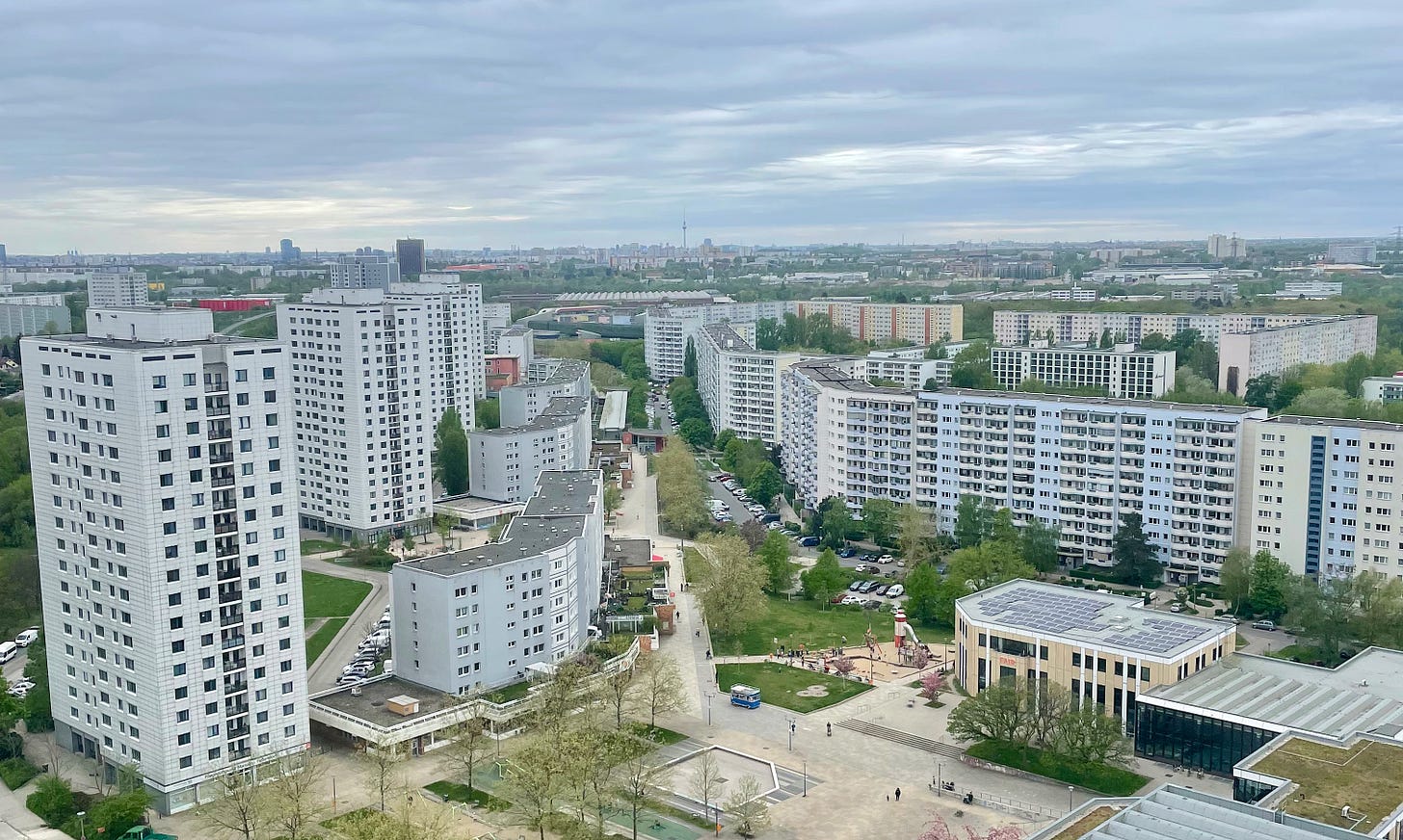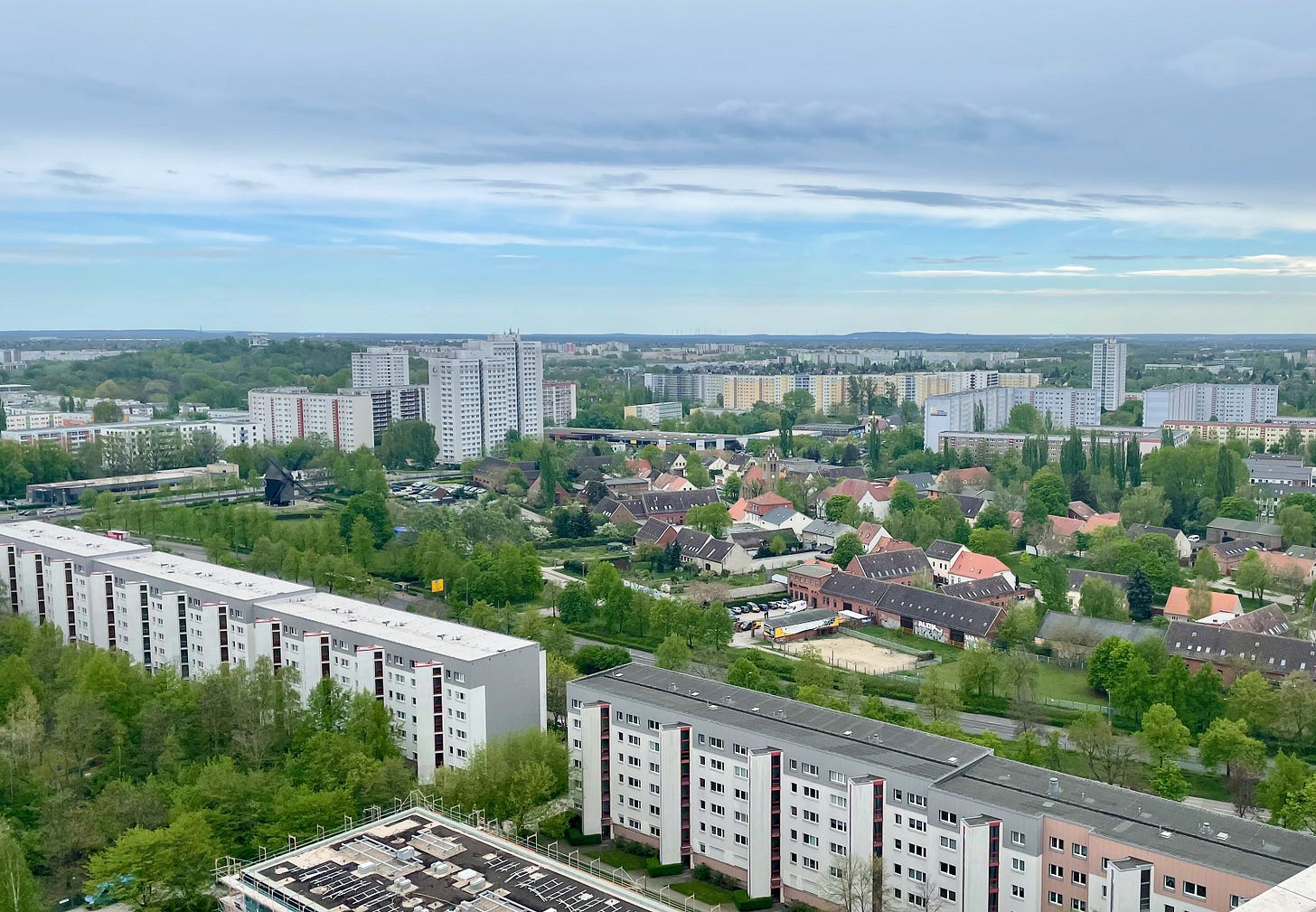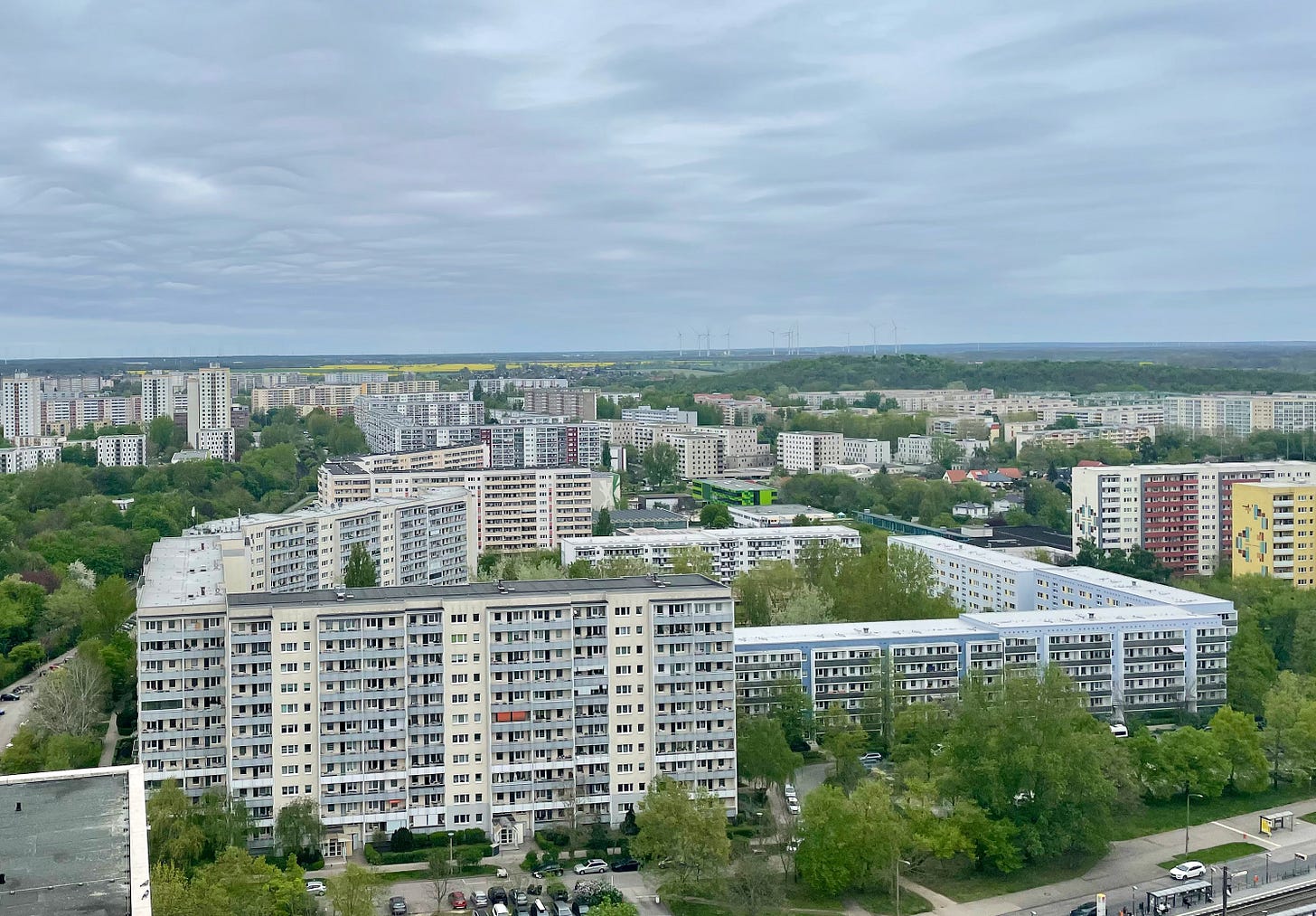
Today’s blog takes me to the far East of Berlin, to Marzahn, the GDR’s largest new build project (1977-1988). I took advantage of a tour of the Marzahn Skywalk, a viewing platform on top of a 21 story apartment block to get an overview and take photos.
The destruction of a significant percentage of Berlin’s housing stock during the war and the subsequent neglect of the remaining stock resulted in an acute housing shortage in the 1960s and 70s. With large parts of its population living in dark cold flats without running hot water, a plan was hatched by the GDR government in 1971 to solve the ‘social problem of housing’ by 1990.
A significant programme of prefabricated apartment block construction commenced a few years later and the first sod was turned in Marzahn in April 1977. The first residents moved into this new community before Christmas the same year, and the entire estate was completed in 11 years.
Blocks of flats constructed from prefabricated concrete slabs were of course build on city edges across the world, but at the time Marzahn was the largest such project in Europe. The housing estate was built around the historical village of Marzahn which dates back to the 13th century.
In 1978 the 1,000,000th home under the GDR new build campaign was completed in Marzahn. Overall 60,000 homes were built there in 11 years, with each eleven story block taking two to three months to complete.
The area was designed for young families, where both parents worked in nearby industries. Apartment buildings are arranged in large blocks with schools, early childhood centres and other community facilities occupying the space within each block. Marzahn, like many similar satellite settlements was and continues to be relatively well connected by public transport. Apartments are light and the luxuries of running hot water and central heating made them highly desirable. One of the apartments has been preserved in its original form and can be visited. You can take a look here.
In German the construction method and resulting buildings are referred to as ‘Plattenbauten’, or simply ‘die Platte’ - ‘the slab’ for short. I found this photo series of images during the construction of Plattenbauten estates in East Germany (mainly in Rostock rather than Berlin).
The legacy of Plattenbauten has presented an additional challenge in East Berlin, where they were deserted by the upwardly mobile looking for better fortunes in the West, after the unification of East and West in 1989. The exodus from East Berlin similarly affected older, more central, areas, but these were quickly claimed by Berlin’s artist community, looking for inexpensive housing and workspaces, and are now some of the most hip and desirable places to live.
Driven by the current severe housing shortage in Berlin, Plattenbauten too are being rediscovered, helped my significant investment to retrofit them to meet modern energy efficiency and other requirements. The state-owned housing corporations have worked at pace and most buildings now meet modern standards. In Marzahn significant investment in community infrastructure and social programmes has occurred and an international garden exhibition saw the construction of a large green space featuring ‘gardens of the world’.
The flats themselves are still light and spacious by Berlin standards and good social infrastructure, generous green spaces, good transport and relative affordability connections are once again bringing young families to Marzahn.
Nevertheless Marzahn continues to have a poor reputation, but perhaps unfairly. A local family who visited the viewing platform at the same time as me, commented that they liked the fact that Marzahn flew under the radar as a good place to live, keeping it relatively affordable. They especially liked that it was so green.
Similarly crime statistics do not support Marzahn’s image as a hot bed of crime. The day I visited the place felt safe and friendly, much more so than some more central areas of Berlin.
Anecdotally it seems that good social and placemaking programmes, and care in selecting tenants go a long way in successfully regenerating older problematic social housing forms such as these vast estates built in the 70s and 80s. In the case of Marzahn, this includes understanding the dynamics between different communities of immigrants, refugees and original East Berliners to avoid conflict and support social cohesion.





